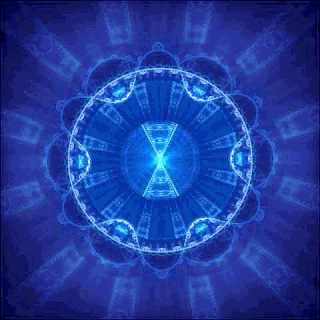Mercury and Venus
Hello everyone this is the Science Fairy saying today is your lucky day because you are going to learn about two planets in one day. The planets are Mercury and Venus. Come on we should go to them in person. Here we go.
Here we go!
We are going to talk about mercury first. Mercury is an extreme planet. It is one of the fastest of all planets, it is one of the hottest planet, and one of the coldest. Mercury is the closet to the sun in the whole solar system. Mercury has an extreme view of the sun. Some times the sun looks like it is going backwards!
Now that is close.
Mercury zooms around the sun at speed of about 48 kilometers per second; earth travels at a speed of about 30 kilometers per second. At certain times and places, Mercury's surface temperature can raise to twice the temperature inside an oven when you are baking a cake. That is hot! But on the other hand, in the shadow of the north poles craters, Mercury is ice like the north pole.
Since Mercury is so close to the sun not even our most powerful telescope can see it. When we look through it looks like a blurry white ball. But here's the good news. In 1974 we really started to learn about Mercury. In 1974-1975, the mariner 10n flew in and sent back 12,000 pictures of it.
That is blurry.
You are probably wondering where the name Mercury came from? Well Mercury came for a Roman god named Mercury. He was the ruler of the sun. So they decided that since Mercury was the closest we chose the name it Mercury. Here's a picture of him.
This is the last thing we are going to learn about Mercury. We are going to learn about the Messenger. It's not a messenger that gives messages it is a spacecraft. This space craft began orbiting Mercury. Messenger's job is to map the rest of the planet, study what it is made of , it will take measurements of Mercury's magnetic fields, and look for clues. Now lets move on. Next up Venus.

This one is going to be very short. Venus was named after a goddess of love and beauty. Venus is known as the sister planet. Back in the day people thought that it is a calm gentle planet. Not!! It is really the evil twin. It has volcanoes, huge craters, and it thunders and lighting every single day. No human/animal can survive because of its harsh climates. Even if it had water it would evaporate super fast. So that means it is a very dry planet. Venus is a little bit smaller than earth.
Now we are going to see what they have in common .
They have no moons.
They are both named after a god/goddess
They both live near the sun.
They both have no animal life.
That's all for today. We should go home now.
We are back home hope you had a spacy time. This is the Science Fairy saying keep exploring.



















